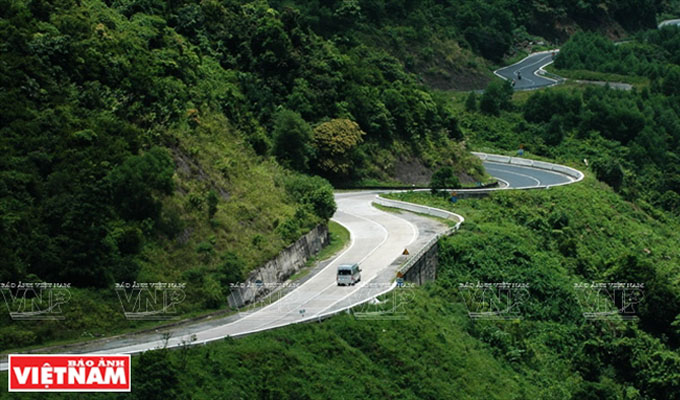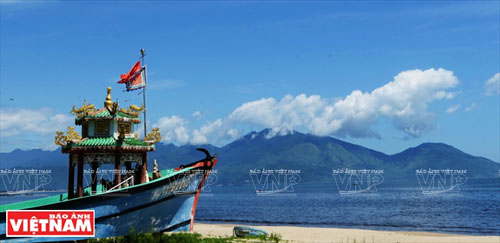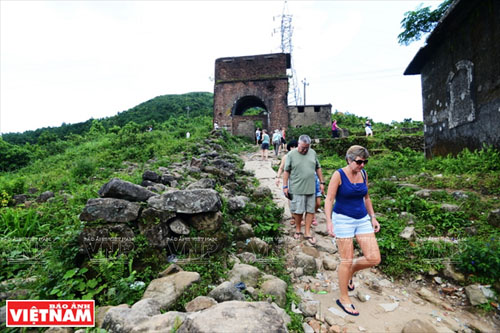For a long time, Hai Van Pass has been known for attacks by animals and robbers. Before “Doi moi” (renewal) with its underdeveloped traffic infrastructure, this section of the road became the worry of long-distance drivers as their vehicles could easily go off the road due to their carelessness. Yet, now Hai Van Pass has become an attraction.

Zigzagging paths appear now and then around the mountain slopes.
Prior to 2005 when Hai Van Tunnel was put into operation, all vehicles running from Hue to Da Nang and vice versa had no other alternative but to crawl up Hai Van Pass which was then the most formidable and frightening pass. Stories of vehicle turnovers or falls into deep ravines due to thick mists were heard about almost daily in the area.
Those who once travelled through Hai Van Pass during that time can never forget the large wooden blocks which were used to chock wheels when vehicles went up Hai Van and had to stop.

Looking at Bach Ma Mountain from Da Nang Bay, which stretches from the Truong Son (long mountain) range to the sea,
creating a natural boundary between Thua Thien- Hue Province and Da Nang, which is the most dangerous
section of Hai Van Pass on the North-South road.
Drivers of passenger cars prepared big bundles of incense sticks to be burned at temples at the peak, praying for safety on their journey. The smoke from burning joss sticks hovered over the dangerous winding sections.
That is why now, not only Thua Thien- Hue and Da Nang residents but also visitors to these two localities all wish to see this well-known mountain pass. Various tours were organised by tour agencies for visitors, and many people have tried to traverse the pass using different means of transport. On motorbikes, visitors can make unforgettable trips through extremely beautiful and winding road sections on Hai Van Pass, with views changing from section to section. At one section, visitors can only see high mountains, vast forests and zigzagging paths. Then at another section, beautiful scenery is before their eyes with the blue sea and blue sky and forests and mountains.

Hai Van watch tower, a military structure built by the Nguyen dynasty on the top of Hai Van Pass in 1862 to
protect the imperial city of Hue and supervise activities in Da Nang harbour, is now a tourist location for
foreign and domestic visitors.
Nature is stunningly beautiful here particularly on beautiful sunny days. Da Nang and the imperial city of Hue are spread out below.
Hai Van sightseers also have a chance to hear interesting stories of Hai Van Pass and mysterious stories of Sir Ho (Mr. Tiger) temple or Miss Ba or Bay temples, where a tiger deity or persons who died in accidents on this mountain pass are worshipped.
Hai Van Pass is worthy of becoming a prime destination on the North-South journey. It takes visitors only two hours plus to drive more than 20km of winding paths to discover of the history, culture, spirit and especially the natural scenery land and people of Da Nang and Thua Thien- Hue.
|
Hai Van Pass is approximately 20km long and 500m above sea level. It is on National Road 1A some 80km from the heart of Hue to the south and over 20km from the center of Da Nang to the north, running across Bach Ma Mountain which stretches from the Truong Son (long mountain) range to the sea, creating a natural boundary between Thua Thien-Hue Province and Da Nang. Tourists can discover Hai Van Pass by car, motorbike or even train, but the most fun is by motorbike.
|